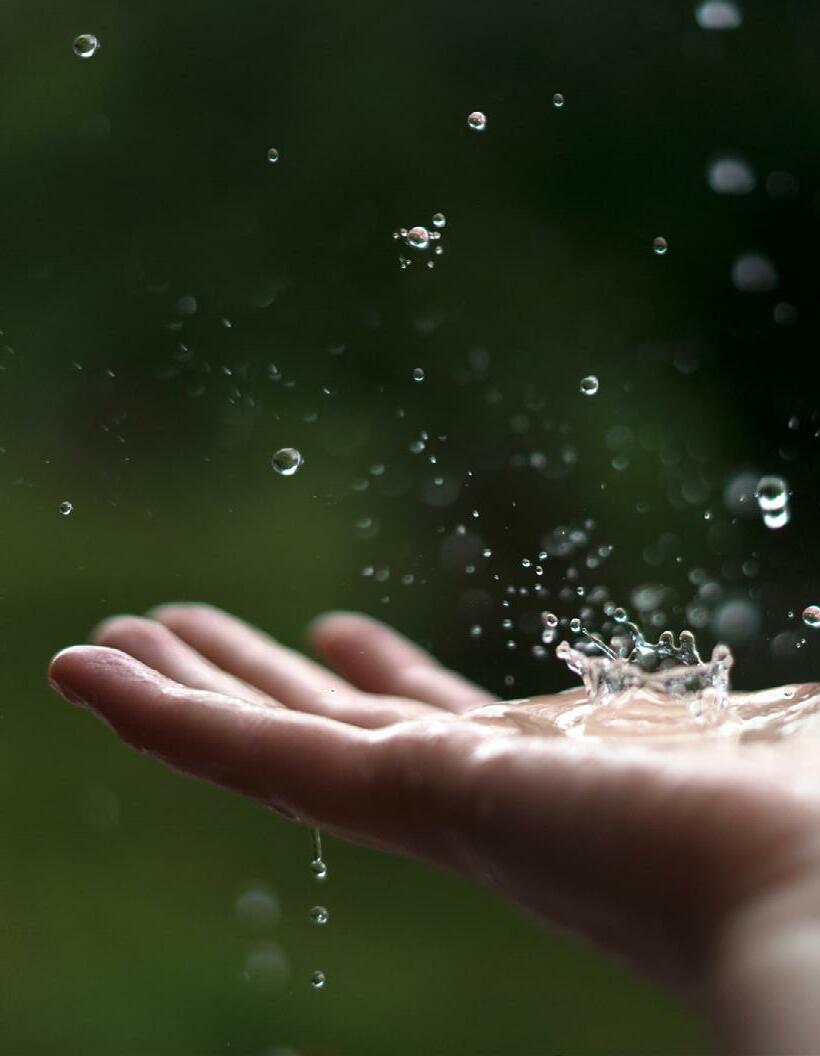
THE DAVID H. SONABEND CENTER FOR ISRAEL | FALL 2022TAMUZ
2 THE DAVID H. SONABEND CENTER FOR ISRAEL
3 The David H. Sonabend Center for Israel | Quarterly Magazine | Fall 2022 TABLE OF CONTENTS Welcome 4 Opinion 6 Water for Blessing or Curse? For Israel and Its Neighbors, Environmental Cooperation Means Survival Features 15 The Source of Life, An Opportunity for Peace A Gateway to Spiritual, Mental, and Physical Wellness Agricultural Innovation: From Waste to Nourishment Artists 32 The First Israel Biennale of Contemporary Jewelry Cuisine 38 Apple Strudel with Limor Laniado Tirosh Face the Music 42 Israeli Voices: The Next Wave Inspirational Israeli 46 Q&A with Tal Ohana Trail of Israel 50 A Virtual Walking Series Coming Up at the J 52 TAMUZ H. SONABEND
This is our fourth issue of TAMUZ, marking our first full cycle. Each issue has explored a specific theme, grounding it in current events and real issues that we face both here in America and in Israel. Just as our first issue focused on the new year, so too does this Fall issue, as we celebrate the Jewish New Year, entering the year 5783. The High Holidays, coming out of summer and heading into the fall, are a time to pray for rain. We both change the words in the silent prayer from mentioning “dew” to asking for “rain” as well as celebrate the Simchat Beit Hashoeva, Rejoicing of the Water Drawing House, during the intermediary days of Sukkot. In the days of the Temple, the Beit Hamikdash would include a special water libation ceremony followed by intensive dancing, singing, and celebration.
This focus on praying for and celebrating water directly following the start of the Jewish New Year highlights the centrality of water to life. Directly after our repentance and prayer for spiritual sustenance in the new year, we pray for continued physical sustenance and a positive judgment of our water supply.
Unfortunately, our prayers are more important now than ever. Major droughts continue in the U.S., with the levels of rivers and reservoirs dropping in key supply locations. The Middle East is no exception. Surprisingly, however, Israel has managed to overcome this problem with a focus on innovation. We delve deeper into the country’s water management and innovations in “The Source of Life, an Opportunity for Peace ” on page 15.

WELCOME
Our team also explored water as a tool: in exercise, in therapy, and in life. The Nia Movement uses water as its basic mindfulness practice, to sense the flow of stimulating brain and body information and lead practitioners into a more fluid, relaxed, powerful, conscious, and satisfying way to move, be, and live. Beit Issie Shapiro splashes onto the scene by helping those in need through the healing power of hydrotherapy. Explore both of these incredible organizations in “A Gateway to Spiritual, Mental, and Physical Wellness” on page 23.
We hope that our blessings will flow like water, especially to those states and countries experiencing water scarcity. We encourage you to explore these resources for information on how to be more water conscious, from the states of Florida and California, the Environmental Protection Agency, and National Geographic:
25 Ways to Save Water
6 Steps to More Effective Water Conservation for Businesses

WaterSense: Start Saving
The Water Crisis
This issue marks the beginning of the Center for Israel’s fall season. You can learn more about some of our future events at the JCC here We hope you join us!
Shanah Tovah U’Metukah!
The TAMUZ Team
5
OPINION WATER FOR BLESSING OR CURSE? IT’S OUR CHOICE
By Mirele B. Goldsmith, Ph.D.
Sukkot is my favorite holiday. I love the joyful time I spend outdoors in the sukkah, and I appreciate the emphasis on enjoying the gifts of nature. While many Jews recognize that on Sukkot we celebrate the harvest of the fields, the rituals of Sukkot teach us that for our ancestors, this holiday was as much a time to celebrate the water that made the crops grow.
Before the reinvention of Judaism following the destruction of the Temple in Jerusalem, the highlight of Sukkot was the Simchat Beit HaShoevah (Rejoicing of the Water Drawing House). Water was drawn from the Siloam Pool each day during the festival and poured on the altar. The Talmud records that “one who had never witnessed the Rejoicing at the Place of the Water Drawing had never seen true joy in his life.” Today, during Sukkot we wave the lulav, a bouquet of branches and fruit associated with water: willow, which lives on the banks of streams; palm, a symbol of the oasis in the desert; myrtle, which grows on the slopes of hills near water; and citron, or etrog, a fruit tree that requires heavy irrigation to thrive. Our ancestors knew their lives depended on
water. We are just as dependent, despite the vast infrastructure that separates us from the sources of water that sustain us. Until recently, it may have been easy to ignore this dependence, but now climate change is disrupting the water cycle. Drought in California is leading to unprecedented wildfires. In Kansas, extreme rainstorms result in record-breaking floods. Rising sea levels are inundating Florida coasts. Melting permafrost is destabilizing soil in Alaska. All these changes are affecting people directly through destruction of homes, livelihoods, and communities.
Fortunately, protecting people from the changing climate is stimulating creativity all around the world. The city of Rotterdam is building parking garages, plazas, and basketball courts in neglected neighborhoods that can serve as emergency reservoirs. Israelis, long-time leaders in adapting to dry conditions, are continuing to innovate in drip irrigation to help farmers grow crops with minimal use of water. Right around the corner from the JCC, New York City has installed rain gardens in the sidewalk to absorb runoff from rainstorms.
6
 Lulav and etrog
Lulav and etrog
Preventing more damage to the water cycle by reducing the use of fossil fuels is equally critical. There is good news on this front, too. Governments at every level are taking steps to accelerate the transition to renewable solar and wind energy in place of coal, oil, and gas. For example, New York City passed a green building law requiring large buildings to reduce planet-warming emissions. This past August, Congress passed the Inflation Reduction Act of 2022, which provides incentives for companies to generate more renewable energy and for individuals to make their homes more energy efficient and switch to electric cars. This is a big deal—the largest investment the United States government has ever made in climate solutions.
Climate change is such a big challenge that everyone can find a way to contribute, whether at home, in your community, or through advocacy for systemic solutions.
As a leader of Jewish Earth Alliance, I have found my calling in helping Jews raise our voices for action by Congress. Jewish Earth Alliance collaborates with many groups, organizing Jews to respond to the climate crisis. Our partners include Higher Ground Initiative, focusing on empowering congregations to address sea level rise, and Tikkun HaYam: Repair the Seas, raising awareness of how climate change and other human impacts threaten the oceans.
Sukkot reminds us that we must not take the gift of water for granted. As the festival comes to an end, there is a change in emphasis from gratitude for the past year’s bounty to concern about the future. On Hoshanah Rabah, worshippers circle the synagogue again and again crying out “Hoshanah—save us!” As Rabbi Arthur Waskow teaches, this cry should rightfully be translated as “Save the Earth! Save us!”
After Sukkot, on Shemini Atzeret (Eighth Day
 The Jewish Earth Alliance led a Sukkot Climate Caravan to Washington, D.C. in September 2021 to meet with Congress and local leaders, including Montgomery County (Maryland) Executive Marc Elrich.
The Jewish Earth Alliance led a Sukkot Climate Caravan to Washington, D.C. in September 2021 to meet with Congress and local leaders, including Montgomery County (Maryland) Executive Marc Elrich.
8
of Assembly), worshippers recite the prayer for rain for the first time in the new year. This prayer, which will be included in the daily prayers throughout the rainy season of the Land of Israel, concludes with a plea that the rains will come only for blessing. As we now understand all too well, water is not always a blessing. In the wrong place, at the wrong time, or in the wrong amount, it is a curse: “You are our God, abundant in your saving acts, who makes the wind to blow and rain to fall. For blessing, not for curse. For living, not for death. For plenty, not for scarcity.” This Sukkot, let’s keep in mind the sense of urgency about climate change that our ancestors felt about the coming of the rains. With our actions, we can choose blessing. Mirele B. Goldsmith, Ph.D., environmental psychologist and activist, is co-chairperson of Jewish Earth Alliance. Find more information about how you can help call on Congress for action on climate, visit JewishEarthAlliance.org.
The Marlene Meyerson JCC Manhattan is proud to host regular forums for ideas that allow for open conversation and dialogue on topics related to Israel and the world. We present this op-ed section in a similar vein: in the hope that open, honest dialogue will take root, and that we may participate in that dialogue with you, our community. To reach us with your thoughts, email Rebecca Grossman at rgrossman@mmjccm.org.
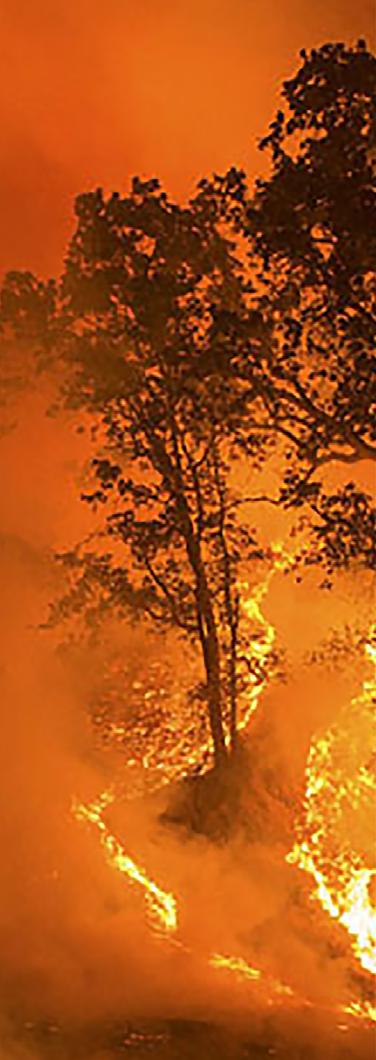
FOR ISRAEL AND ITS NEIGHBORS, ENVIRONMENTAL COOPERATION MEANS SURVIVAL
By Gidon Bromberg, co-founder and Israeli director, EcoPeace Middle East and Yuval Ben David, international advocacy coordinator, EcoPeace, Tel Aviv office
This summer, for the first time in years, the sea in Gaza was clean enough to swim in. Home to 2.2 million people, the densely populated, 41-kilometer strip has been under an Israeli/Egyptian blockade since 2007, when Hamas first rose to power. With movement of people and goods in and out severely restricted, the beach is one of the few outlets available to Palestinians in Gaza—but untreated waste flowing into the Mediterranean Sea had made that a dangerous pastime.
This year is different, thanks to three new waste treatment plants funded by the international community. Those donors had nearly pulled out after over a decade of delays, largely due to Israeli concerns that the cement needed for the construction would end up in the hands of Hamas to build tunnels to attack Israel. What eventually turned the tide of Israeli government policies was an understanding that military security was not the only security interest or issue at stake. We at EcoPeace demonstrated that Gaza’s raw sewage was forcing the intermittent
closure of the Ashkelon desalination plant, only seven kilometers to the north—and responsible for 15 percent of Israel’s domestic water supply! Through satellite images, we learned that the Ashdod desalination plant—for a further 15 percent of water supply—was also at risk of closure.
Faced with additional new facts related to health security, researched by EcoPeace, all the mayors on the Israeli side of the Gaza border, from both left and right, wrote a letter to the Prime Minister expressing concerns about the local public health implications of Gaza’s water and sanitation crisis. Ultimately, then-Prime Minister Benjamin Netanyahu made a public statement underscoring that Israel’s water and health security is bound up in Gaza’s. As a result the cement needed to build the treatment plants quickly moved into Gaza. The lesson learned—you can never disengage from a shared environment, and from your neighbor’s ability to manage it.
A trilateral Israeli-Palestinian-Jordanian
10
OPINION
 Port of Gaza
Port of Gaza
PHOTO: RAMEZ HABBOUB
organization active for nearly three decades, EcoPeace seeks cooperative solutions to protect our shared environment, advancing concrete solutions that bring real benefit to people on the ground. We have worked to attract investment critical to rehabilitating the Jordan River, helping leverage more than $100 million to clean up its waters. While the peace process is stalled—and that there is “no partner” for peace has become a regular mantra of politicians on all sides— every day our work demonstrates that there is a partner on the other side.
it easier to point fingers than build solutions. This was the mindset of how water was negotiated in the Oslo Accords in the mid1990s between Israelis and Palestinians. Water was left unresolved as one of five final status issues, because coming to an agreement over sharing scarce natural water was difficult and would produce winners and losers.
Today, advancements in water technologies, often led by Israeli innovation, present the opportunity for Palestinians to obtain their rights to a fair share of natural water sources without reducing water availability for the Israeli side. Israel’s global leadership in Gidon Bromberg addresses the United Nations Security Council.
Too often, the people of the region are held hostage to a zero-sum mentality that makes
 PHOTO: ECOPEACE
PHOTO: ECOPEACE
MIDDLE EAST
desalination and wastewater reuse paves the way for creative, mutually beneficial solutions that could help unlock the stalled peace process.
Of course, technology is not a panacea, especially as climate change exacerbates the region’s existing challenges. The Middle East is heating at twice the pace of the global average, with catastrophic consequences for food and water security, livelihoods, health—and regional stability. Israel’s eastern neighbor, Jordan, is the second most waterscarce country in the world, with increasingly intense and destabilizing droughts dominating the kingdom’s anxieties. By expanding our traditional notion of “security,” the climate crisis—the most acute, existential threat of our time—can bring the peoples of the region together.
In our Green Blue Deal report, published in 2020, EcoPeace called for the countries of the region to leverage their comparative advantages in renewable energy and water to improve collective resilience. Jordan, with vast desert areas, enjoys a comparative advantage in solar energy. Israelis and Palestinians, with access to the Mediterranean, both enjoy a comparative advantage over Jordan in the production of fresh water via desalination. Regional exchange of water and energy would boost efforts to mitigate climate change, ease water scarcity and promote healthy interdependencies, giving each side something to sell and something to buy.
That vision is becoming a reality. A breakthrough was the “water-for-energy” deal signed by Israel, Jordan, and the United Arab Emirates in November 2021, in the presence of U.S. Special Presidential Envoy for Climate John Kerry. The agreement, which will see Israel exporting desalinated water in exchange for solar energy produced in Jordan, was a major step towards realizing our vision for the region. As a next step, we are advocating for Palestinian solar energy from Area C of the West Bank to be wheeled across Israel and power a new desalination plant in Gaza, where 97 percent of the water in the enclave’s sole aquifer is no longer drinkable.
In our offices in Tel Aviv, Ramallah, and Amman, EcoPeace demonstrates that environmental cooperation is not only necessary, but brings real benefits to all sides.
In the face of the climate crisis, we need the whole region to cooperate. Our common survival, in fact, depends on it.
13
 A drip irrigation system
A drip irrigation system
14
The Source of Life, An Opportunity for Peace
By Rebecca Grossman, Program Director, The David H. Sonabend Center for Israel
What do you think about when you hear the word “water”? A simple element in nature, composed of two hydrogen atoms bonded to an oxygen atom, it is the crux of existence on Planet Earth. Humans, animals, and plants all require water to survive.
Water Scarcity: The Imminent Global Crisis
Unfortunately, the fact that we need it does not guarantee that we will have it. Around two-thirds of the world’s population, roughly 4 billion people, experience water scarcity at least one month a year; 1.2 billion people, one in seven, have difficulty accessing water.
In some places that can mean spending almost the entire day walking to the well and back, a task that can keep girls from participating in school. In addition, the accessible water can be heavily polluted, causing a child to die every two minutes from waterborne diseases.
Our water shortage is more widespread than we might think. In my conversation with Seth M. Siegel, author of Let There Be Water: Israel's Solution for a Water-Starved World, he emphasized that in the next five to 10 years, we will start seeing a phenomenon
of “water refugees,” and other parts of the world will need to manage how to absorb them. The issue is global, with water scarcity at one level or another affecting people in the U.S. Southwest, Pakistan, Iran, Iraq, along the Po River in Italy, Brazil (home of the mighty Amazon), in Sub-Saharan Africa, Northern China, and Australia.
The problem has been spurred by climate change, in tandem with a sharp increase in human population and needs. The UN predicts that the world’s population will grow from 8.5 billion in 2030 to 10 billion by 2100, due to both increased life expectancy at birth and increased life longevity. Though these are huge successes for humanity, paired with our rising standard of living, they also mean significant increases in meat consumption, clothing production, and household and business needs; all of which require water.
Israel: A Light Unto the Nations
Israel is no different. Indeed, Israel is in the driest regions of the world, with nearly twothirds of its land consisting of desert and one-third only semi-arid. According to Siegel,
15
FEATURE
in his Tedx on Israel’s solution to a water starved world, Israel’s average annual rainfall has diminished almost 25 percent, while its population has increased eleven-fold in the last 30 years. Despite these challenges, Mekorot, Israel’s national water company, provides healthy, safe, 24/7 on-demand water throughout the country. Israel is selfsufficient in the production of fruits and vegetables while exporting billions of dollars of produce; it provides the Palestinean Authority with 60 percent of the water consumed in Palestinian homes in the West Bank; and also sends significant amounts of water to Jordan and into Gaza.

The key to such success in water has been, as spokesman for the Israeli Water Authority Itai Dodi stated, “long-term management of the water sector taking into account climate changes and population growth.” First and foremost, Israel was a water-conscious society even before its establishment as a state. Israel’s pre-state leaders created
a culture and ethos that would not allow water scarcity to inhibit the country’s growth, putting money and minds to work on its water future. Furthermore, there is a technocratic governance of water, a system without subsidies that uses market pressures to help control consumption, and encourage conservation, efficiency, and innovation. Comparatively, Israel has one of the lowest water usage rates in the world, with around 50–60 cubic meters per capita for residential consumption and private gardening. And when this has not been enough, the Israel Water Authority has held awareness campaigns, the most notable in 2009 featuring Israeli celebrities Ninet Tayeb, Bar Rafaeli, and Moshe Igvy speaking about the declining water levels of the Kinneret and the need to consume water in moderation.
Conservation has led to many innovations over the years. In agriculture, the innovation of drip irrigation allows plants to absorb 95 percent of the water provided, so less water can be allocated to farms without compromising output. Netafim, an Israeli company, is the world's leader in pressurized drip irrigation technology, existing in 110 countries, working with millions of farmers on 10 millions of hectares, operating 33 subsidiaries, with 5,000-plus employees, and 17 manufacturing plants. More recently, N-Drip, formed by a team of scientists and agronomists, has introduced low-cost drip irrigation technology that operates without any external energy, running exclusively
16
with endlessly renewable gravity as its power source. This innovation has reduced the amount of carbon in the fields where it is utilized by more than 50 percent while increasing yields by as much as a third.
Israelis have even been at the global center of seed innovation, at times modifying DNA to make plants as drought-resistant as possible. For example, Israeli scientists have developed tomatoes with very short roots and almost no leaves, as well as wheat with a very short stalk. With financial support from JNF-USA, and others, Israel has also set up 230 water reservoirs, which help minimize the loss of water and optimize its utilization.
This management has also resulted in an emphasis on innovation and technology to manufacture water, with two-thirds of the water used by homes, offices, businesses
of all kinds, and even agriculture coming from developed sources. Israel has been able to capture and treat wastewater to an ultra-high level of purity, and by 2015 used 86 percent of its wastewater in agricultural operations. In comparison, Spain, the next leading country, used only 17 percent of its wastewater.
The equivalent of 75 percent of water used in homes in Israel comes from another source: desalination, seawater reverse osmosis for which the Israeli government created five operational desalination facilities. According to Dodi, the percentage of water from desalination is expected to reach 90 percent in coming years.
This hypersensitivity to water scarcity has also led to more individual-use innovations to help those operating off the grid. One
 Seventy-five percent of water for homes in Israel comes from desalination plants, such as the one at Ashkelon.
Seventy-five percent of water for homes in Israel comes from desalination plants, such as the one at Ashkelon.
example comes from Tel Aviv University Professor Hadas Mamane, head of the Environmental Engineering Program and the Water-Energy (WE) Laboratory at the School of Mechanical Engineering, and doctoral candidate Dana Pousty, who have developed SoLED, a patented UV-LED water disinfection technology. This initiative is funded by the Asper Fund for Bringing Clean Water to the Developing World. UV-LEDs use ultraviolet light emitting diodes, similar to those in traffic lights, but on the UV scale. Ultraviolet light changes the genetic nature of a cell so that it will no longer replicate, which effectively kills bacteria. Set to a maximum sanitation level, water flowing through the UV-LED chamber is purified. Because it is solar powered, with a very low energy consumption, it can be integrated into existing solar panels or even powered by the water flow and combined with existing water filtration systems, or function as a standalone product. The innovation brings clean water to infrastructure-limited areas, with the ultimate goal to produce a scalable solution that could be manufactured for mass distribution in rural areas and lowincome settings.
Other Israeli innovations in water technology can be explored at Start-Up Nation Central, including WellToDo, Sensoil, Tevet Water Technologies, WADIS, Cropx, and Lishtot.
Cross-Boundary Tensions
Of course, the incredible innovation and conservation of water that exists in Israel is not immune to political tensions of the Israeli-Palestinian conflict. In my conversations with Director Clive Lipchin and Fareed Mahameed from the Arava Institute’s Center for Transboundary Water Management, they explained how issues of water management become obvious once one enters the West Bank. Most of the supply comes from groundwater, through aquifers. Due to political regulations set up through the Oslo accords, Palestinians cannot access the majority of the groundwater, which is in Area C and completely controlled by Israel; they need to get approval from the Joint Water Committee, as do Israelis, to access water through wells in Area A, which is controlled by the Palestinians, even if on private Palestinian land. Usually, Palestinians are denied this action, as it is interpreted as a violation of the No Harm Clause, assuming they will over pump the water. Israelis in other regions, such as in the Arava, drill 500–600 meters deep, while Palestinians are denied access to drill even 50–100 meters. This keeps Palestinians reliant on Israel for water supply. It is a difficult balance between water rights access and ensuring safety and cleanliness of the aquifer.
Palestinians also need permission from the Joint Water Committee in order to fix or improve any aspect of the existing water
18
infrastructure. This has led to continual leaks, as well as a lack of wastewater treatment or sewer grids; sewer water gets dumped either into pits that need to be pumped or directly into the environment, making the Arava Institute’s work on treating it locally ever more important. As a point of comparison, Israelis treat 90 percent of their wastewater and use 80 percent, while Palestinians treat 10 percent and reuse less than 1 percent.
Furthermore, systemic access to water becomes extremely politicized and physically obvious. While settlers are provided with full access to running water, even enough to operate date farms, Palestinians in the West Bank are not. Instead, they have an intermittent water supply, with times during the week when they do not receive water through their pipes. As such, they must have a backup service, with water tanks on top of their houses, a distinct way to determine between settlements and Palestinian homes.
The Arava Institute: Helping Marginalized Communities, One Project at a Time

Water does not, of course, know the boundary of city or country lines. As such, it is crucial for Israel to work with its neighbors on this pressing matter. The Arava Institute’s Center for Transboundary Water Management “provides a platform for regional water professionals and policy makers to cooperate in water conservation, desalination, wastewater treatment, and education. The Center facilitates direct communication among regional water professionals in the three lower riparian states of the Jordan River and Dead Sea Basin (Israel, Palestine, and Jordan).” The Institute focuses on environmental issues and works people-to-people, improving lives on the most basic levels.
Currently, the Institute is focused on wastewater surveillance and treatment,
Water tanks are visible on roofs in Nablus
19
including identifying the presence of COVID-19, as a tool to track how the virus is spreading across boundaries. For example, in more rural and off-the-grid areas, such as Bedouin communities, the concentration of COVID-19 in the wastewater was high, although infection numbers were low, signifying under-testing, which is often typical in marginalized communities.
Once the intensity of disease in off-grid communities becomes apparent, the treatment of wastewater is critical to preventing the spread of illness. The Laguna Innovation system helps communities such as Bedouins and Palestinian villages create totally independent, solar-powered, portable, automatic, and online streamingcontrolled wastewater treatment. The lack of permanence is especially important when working with unrecognized communities, within which any permanent building or system is illegal; even more so when working with government mandated school buildings, highlighting the contradictions in Israeli laws.
The work not only treats water for sanitary purposes, but also assists in eliminating the smell and empowers people to live more positive lives. Laguna Innovation is also working with the Jordanian Ministry of Tourism on an off-grid wastewater treatment system for the hospitality industry, so that water can be recycled and used for irrigation around hotels.
The team believes that through a bottom up approach and grassroots transboundary collaboration the Center for Transboundary Water Management is contributing its part to build bridges of environmental peace between people, hopefully advocating for an end to the political conflict through peaceful environmental solutions. Water can both divide us as well as bring us together.
To support the work of the Arava Institute, contact Friends of the Arava Institute to donate, assist with networking and partnerships, spread the word, and more. As Americans, we can lobby our politicians to do more of this work such as through the Nita M. Lowey Middle East Partnership for Peace Act (MEPPA). If you have any ideas, get in touch with the Arava Institute, as they appreciate any kind of help.
Water does not, of course, know the boundary of city or country lines.
20

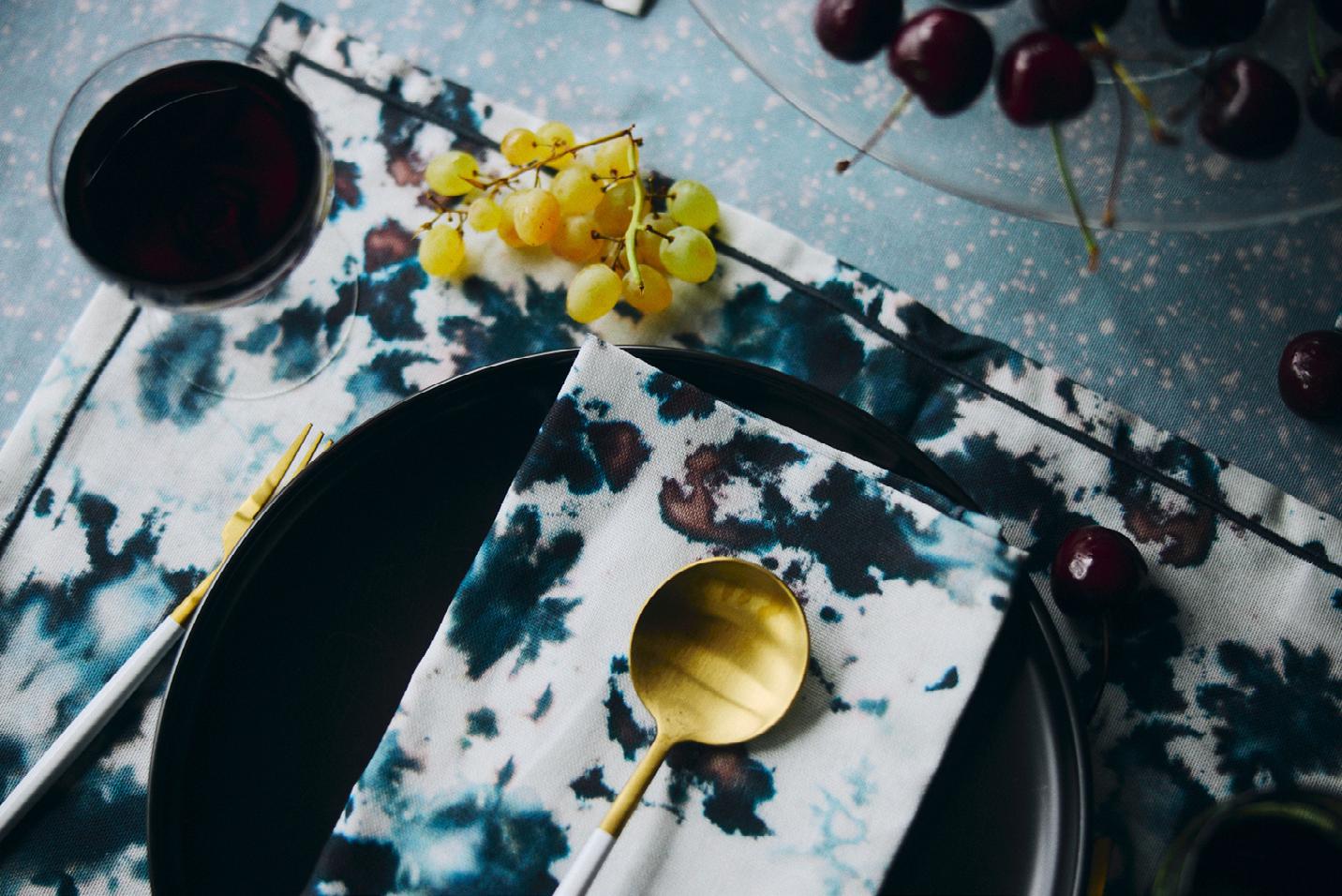

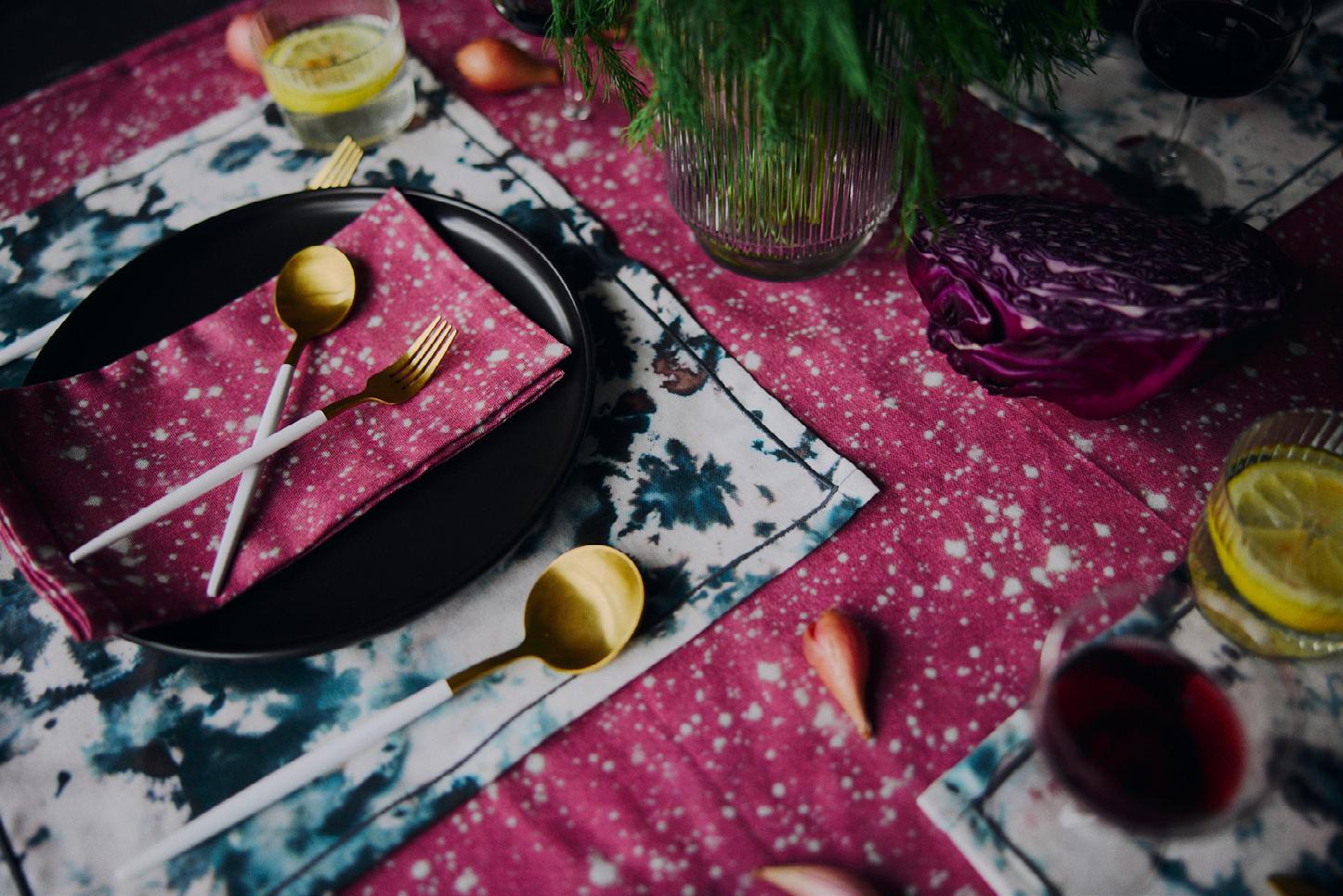

21 DESIGNED FOR CELEBRATING BEAUTIFUL LINENS FOR YOUR TABLE USE CODE TAMUZ WHEN YOU SHOP WWW.GOLDIE-HOME.COM ADVERTISEMENT

22
A Gateway to Spiritual, Mental, and Physical Wellness
By Rebecca Grossman, Program Director, The David H. Sonabend Center for Israel
Water is not only the life source of sustenance. It is also a pathway toward spiritual, mental, and physical well being. My conversations with Beit Issie Shapiro on hydrotherapy and with Debbie Rosas about the Nia Technique demonstrate that whether we are utilizing water literally or metaphorically, it can bring an immense amount of healing.
Healing Hydrotherapy
In Jewish ritual, as The Jewish Woman website notes, the mikveh, or spiritual pool of water, “offers the individual, the community, and the nation of Israel the remarkable gift of purity and holiness.” In its purest form, a mikveh can be nature’s own oceans, rivers, wells, and spring-fed lakes. When such bodies are not readily available, or not easily made private, a man-made structure, akin to a pool with a specified quantity of natural water, serves this purpose. Water purification is so central to Jewish customs that mikvahs are typically one of the first infrastructures built in a new Jewish community.
Complete immersion in water is also used to work on mental and physical health. The water provides a high-resistance, low-impact environment that helps support smoother exercise and movement while burning more calories.
This type of water environment is used to provide life-changing hydrotherapy for children with disabilities. Beit Issie Shapiro, an Israel-registered charity, runs one of the largest hydrotherapy programs in the world.
They shared this story from their work: Yoni is a three-year-old boy with cerebral palsy. The muscle tone in his arms and legs is very high, and his back muscles are weak, which means that his body is bent over most of the time. Only in hydrotherapy can Yoni move his body, and he was making excellent progress until treatments ceased in March 2020 due to COVID-19. Two years later, Yoni finally returned to the water. While he was delighted, his hydrotherapist was extremely concerned, as Yoni’s condition had significantly deteriorated.
23
FEATURE
Yoni now urgently needs weekly hydrotherapy to ease his discomfort, learn to move his body again, and regain the function he lost in just a few months.
Weekly hydrotherapy is critical for children with severe disabilities at Beit Issie Shapiro, most of whom are unable to walk or crawl typically and spend their days either immobile in a chair or reliant on mobility aids like walkers.
Hydrotherapy is a lifeline for these children. The buoyancy of the water eases their pain and muscle spasticity as expert hydrotherapists work one-on-one to improve each child’s muscle tone, balance, and circulation, while increasing core strength, range of motion, and stability. This dramatically improves the children’s health
and quality of life and boosts their selfesteem by succeeding in an enjoyable and relaxing environment.
The knowledge and expertise developed while treating the children at Beit Issie Shapiro are shared through its hydrotherapy training institute, which has trained thousands of hydro-therapists in Israel, the U.S., Europe, and even China.
A Metaphorical River
The flow of water can also influence even the most healthy people. In the Nia Movement, the concept of water is utilized in a basic mindfulness practice to sense the flow of stimulating brain and body information. This leads to a more fluid, relaxed, powerful, conscious, and satisfying way to move, be, and live.
ImmerseNYC, a project of the JCC, is open for in-person immersions at mikveh facilities in Manhattan and Westchester or virtually from your own home. Trained volunteer mikveh guides facilitate welcoming, transformative immersions for our diverse Jewish community that honor the sacred nature of our lives, bodies, and experiences, and reclaim an ancient ritual for a new world. Visit immersenyc.org to start your mikveh journey.
The Nia Movement utilizes sound, touch, and sight to achieve a therapeutic physical and energetic alignment flow. When I connected with Debbie Rosas, founder of Nia Technique, Inc., she delved deeper into this beautiful and holistic perspective and way of movement and life.
How is water the grounding element for our physical and mental healing?
Moving as if in water is the first movement in Nia’s Five Stages of Self-healing therapeutic practice. Since the human body itself is mostly liquid and space, we are actually able to use the metaphor of water to delve into
24
the form and function of our body. We can look to the fluid nature of our body to help us appreciate that as energetic beings we are fluid and we are designed to be in flow.

We can live life standing on the shore or by jumping into the river of life, learning to become as water and go with the flow, riding the waves of change, surfing the ups and downs of life. The shore is a metaphor that represents habits. It defines the edge of what you know and feel safe with. The shore is what is familiar to you, the foundation you stand on built from what you currently know. Nothing stands still. Health and well-being require that we move and go with the flow. The river is a metaphor that represents the
watery aspect of change and flow. This is the place of the unknown where your greatest potential lies, birthed from unknown wisdom not yet explored. Consciously jumping into the river, getting off the shore, is how you tap into the wisdom of the unknown. Learning to play in the river comes from resisting the urge to get back to the shore of habit and safety. The water aspect of the river teaches us to play with the tensions between habit, the known, and unknown to create new experiences. New, novel, and fascinating experiences are how we grow our brain and keep it healthy. In the flow, and watery aspects of the river is how we become physically and energetically adaptable and reflexive.
Caroline Kohles, senior program director of The Davidson Fishberg Center for Health + Wellness at the JCC, leads a Nia class.
25
As human beings we are capable of reflexivity and self-reflection. Anthony Giddens, and a number of other social theorists and commentators view reflexivity as the guiding principle of modern selfidentity. In Giddens’ own words, “reflexivity refers to a world increasingly constituted by information rather than pre-modern modes of conduct” and involves "the routine incorporation of new knowledge or information into environments of action that are thereby reconstituted or re-organized.” In the sociology of knowledge, reflexivity refers to the circular relationships between cause
and effect, especially as embedded in human belief structures.
What is an example of your therapeutic practice?
The Nia’s Body’s Way Workout is a sevenminute tune-up that physically, mentally, emotionally, and spiritually prepares you to stand up and walk in flow and in harmony with gravity and levity. What is unique about the seven-minute workout is the way I have combined these five movements with moving down and up from the floor, by creating the anytime, go-to movement experience to help you develop and sustain systemic strength, flexibility, mobility, agility, and stability in ways exercise alone cannot.
What activities do you have in connection with Israel?
The Nia Technique has instructors around the world, including in Israel! You can check out our Nia Community Spotlight with Orli Zahor.
In practice, The Body’s Way philosophy supports and aligns with the innovative thinking of Israeli medical sociologist Aaron Antonovsky and his concept of well-being, Salutogenesis [the study of the origins of health] is concerned with helping people move towards health rather than away from disease. Antonovsky’s well-being theory, Sense of Coherence, articulates three key conditions people require to effectively move toward health. Nia’s movement medicine

26
methodology embraces the theory in these points:
Comprehend: I understand. Applying The Body’s Way philosophy empowers participants to understand unique needs. Participants learn interoceptive skills to sense anatomy and somatosensory signals. Mind-body awareness establishes comprehension.
Manage: I feel confident I can move. Participants learn how to effectively manage their self-healing process using sensation to personalize and adapt movement effectively for their body. In Nia® Moving to Heal classes, participants follow simple, functional moves and practice therapeutic movement dynamics. Pattern repetition
supports confidence and systemic stability— participants take their time to move according to their body’s needs.
Meaning: I know why I want to do this. Participants move according to intrinsic motivation. They establish and assess their movement goals. This is key to bodycentered fitness and movement medicine. Participants personalize according to what they need to feel better; feeling better is meaningful.
Check out the JCC’s ongoing Nia classes in the group exercise schedule!

Or try the Na Five Stage “Taking Care of Your Body” Practice at home. Click here for an easy-to-follow guide and checklist.
 Nia is more than a workout
Nia is more than a workout
27
 Israeli landscape in the Golan heights
Israeli landscape in the Golan heights
FEATURE
Agricultural Innovation: From Waste to Nourishment
By Rebecca Grossman, Program Director, The David H. Sonabend Center for Israel

To gain a better understanding of how Israel is managing its agricultural sector, one of the main water users in the country, the TAMUZ team spoke with Michal Levi, chief scientist and senior deputy director general for agricultural innovation at the Ministry of Agriculture and Rural Development. Let’s dive in!
What is the focus of research being done by the Ministry of Agriculture?
As part of agricultural reform currently being promoted by the Ministry, huge sums (hundreds of millions of NIS) will be allocated for this matter, with the understanding that in order to meet the demand for fresh food over the years— certainly while constantly dealing with climate change—we must find advanced and innovative solutions to improve agricultural growth, preserve and improve yields, and fortify our national food security.
Our role is to constantly think about the "agriculture of the future," and to ensure that farmers in Israel keep pace with
technological development, so that they can remain competitive in relation to other countries.
Therefore, the Office of the Chief Scientist in the Ministry of Agriculture and Rural Development budgets for applied research, that is, research that can be carried out in the field and examined for its effectiveness over time. The purpose of the research is to promote and strengthen agriculture in Israel in a global and future perspective, to position
PHOTO: YEDIDA BEGRIS
Michal Levi
29
PHOTO: SHIFRA LEVYATHAN
it as a trailblazer in technological innovation.
This is doubly true right now, when global agriculture is facing the challenges of climate change; research can help promote agriculture and find solutions to these challenges.
How has technology changed the way you collect and analyze data?
Some of the research budgeted by the Office of the Chief Scientist deals with data collection and analysis. We live in a world where information is a very important value, and in today's technological reality, information collection capabilities can be improved significantly, by artificial intelligence, remote sensing, and more.
This information can be a catalyst for entrepreneurship, for further research, for the optimization of agricultural practices, and more.
A few months ago we started a data collection project in the Golan Heights. The intention is to establish a source of Big Data that will be a catalyst for entrepreneurship, together with farmers, as well as for connecting researchers to conduct research and create new technologies. This project will be able to assist farmers in databased decision-making processes and thus optimize agricultural practices, save resources, and increase profitability.
What is the biggest challenge your ministry faces with regard to water usage?
The quality of water around the world in general is decreasing. Agriculture in Israel often uses brackish water and it is necessary to adjust cultivation methods, the variety of crop grown, and level of irrigation. In the Valley of the Springs in the Beit Shean area, studies are being conducted on various crops to build cultivation protocols adapted to water quality. Another example is the Salicrop company that developed a seed treatment method to improve germination and growth in saline soil.
What is the source of the water used for agriculture in Israel?
Israeli agriculture is constantly adapting to new challenges. The water used in agriculture is wastewater. Over 90 percent of the water in Israel undergoes cleaning processes and is put to use in agriculture.
What methods does Israel use to provide water for agricultural use?
The irrigation methods in Israel are varied and depend on the type of crop. A significant part of the cultivation in Israel is drip irrigated.
How has technology changed the way you distribute water?
Throughout history Israel has always had a shortage of water, especially water for
30
agriculture. Because of this, methods have been developed to conserve water, such as drip irrigation. The national carrier that delivers water from the Kinneret was actually the initial source of water for agriculture throughout the country. Over the years they switched to irrigation with wastewater, after developing effective methods for water treatment. Today there are agricultural plots that are irrigated with desalinated water.
In recent years we have been exposed to more technologies that help the farmer to irrigate efficiently and only where irrigation is required—precise irrigation. This is done by using sensors, remote monitoring, as well as connecting to weather forecasting systems. All this information is collected into algorithms, which of course take into account the type of crop, the type of soil, etc., helping the farmer make decisions regarding the opening or closing of irrigation, the required amount, and the exact area.
What is Israel’s use of water for agriculture, both in amount and percentage of total water usage? How does it compare to the rest of the world and how has this amount changed over time?
The scale of agricultural consumption in Israel is 1.2 billion cubic meters of water per year. Agriculture accounts for about 53 percent of total water use; in benign water (suitable for drinking), 30 percent. For comparison, in 1998, 63 percent of total water uses were for the benefit of
agriculture, while 55 percent was benign water.
In what ways have you worked with farmers to reduce water usage?
Back in 2006, the water agreement was signed which, among other things, deals with principles to help agricultural farms to optimize the use of water. This agreement, signed between the Ministry of Finance, the Ministry of Agriculture and Rural Development, the Israel Farmers’ Association, and the Government Authority for Water and Sewerage, provides financial assistance to agricultural farms taking action to improve and reduce water use, due to the increase in water rates.
In this framework, the Ministry of Agriculture provides annual financial support to farms that work to reduce the use of fresh water and increase the use of wastewater, while reducing depreciation (waste) of water. In 2022, 65 million NIS were allocated for this support. Also, the Water Authority supports sewage plants, where wastewater undergoes a purification process to reuse it for agricultural needs, among other things.
Can you explain the water crisis that Israel is experiencing, if any?
For more information about the water sector and crisis in Israel, read this report by the Knesset on the subject (in Hebrew).
31

ARTISTS FIRST LOOK: ISRAEL BIENNALE OF CONTEMPORARY JEWELRY 32 "The Light" ring by Dot Melanin
Contemporary jewelry, while based on the classic field, affords the artisan extensive freedom with regard to techniques and materials. The designs expand a craft into an art form by defying expectations and raising questions about the status quo and accepted beauty markers, expressing a message, expounding an idea, or even raising a protest. The Biennale was created to give maximum exposure and a common platform to participating artists and students, to promote the field and make it accessible to the public.

Every issue of TAMUZ brings you the most creative and unique designers in Israel. This time, we have a special sneak peek at this first-ever event, set for November 10–14.
33
Colorful Recovery
The theme for this first edition is “Colorful Recovery.” COVID-19 has disrupted and changed our reality; the lifestyle we knew has been upended. It has caused fundamental changes in our patterns of life, the economy, and society in general, causing a rift, a turning point, and introducing another layer into our lives, a layer of uncertainty that obscures reality. After a long period of insecurity, fear, and sometimes even despair, we are beginning to see a light at the end of the tunnel; it was just the right time to add color and joy to our lives.
Ariel Lavian, founder of the Biennale, along with his assistant, Halelah Schiff, were sitting at his kitchen table last fall and started dreaming about such an event and how to make their fantasy a reality. It started with an open call to designers, organizations, galleries, and others related to contemporary jewelry worldwide. After several days and nights without sleep, working, mailing, talking, and meeting via Zoom, the picture became clearer. Lavian realized there was no way back, and the first Israel Biennale of Contemporary Jewelry was happening. The open call, also using the theme “Colorful Recovery,” was released in early March, and by the end of June, 187 submissions had been received!

34

35 Necklaces by Deganit Stern Shocken


Jeemin Jamie Chung Noa LIran
Judges
Submissions were reviewed by a panel of three judges:
Chequita Nahar, a Dutch jewelry designer, tutor, and curator. Her work is informed by her bicultural background, reflecting a fusion of cultural influences.

Nichka Marobin, an Italian art historian specializing in Dutch and Flemish art history. In 2011 she founded The Morning Bark, a blogazette on arts and humanities.
Rachel Sasporta, senior curator at the Geological Museum, Ramat Hasharon, Israel.
The panel selected 20 professional artists and seven students to exhibit their jewels at the Geological Museum, which is hosting the Biennale. Many local and global organizations, galleries, and institutions joined Lavian on his path, among them:
Ramat Hasharon Municipality, Klimt02, Four Gallery, Venice Design Week, Lost in Jewellery Magazine, Mydaybyday Gallery, Romanian Jewelry Week, The Morning Bark, ACJ - Association for Contemporary Jewellery, The Gallery of Art in Legnica, The Jewellery Activist, and Art Jewelry Forum
To learn more Visit the Israel Biennale of Contemporary Jewelry website, or check it out on Instagram, @israelbiennale.
37
“This is how I keep my loved ones close. In a simple way—colors, tastes, smells—I show them how much they mean to me. How much I love them.” Limor Laniado Tirosh is an Israeli chef, concentrating on local kitchens and authentic food in her home country and around the world. She studied at LeCordon Bleu in Paris, Leiths School of Food and Wine in London, and the Migros Club School in Zurich, to name a few. She shares her passion through her Local Kitchen blog, her newspaper column, the cookbooks Salad and Main Dish, and more. She also hosts workshops and classes in her beautiful kitchen. Learn more at limortiroche. com or find her on Instagram.

“This is the most delicious strudel I know,” says Limor. “The use of a mixture of bread crumbs and ground almonds between the sheets of dough creates a crackling and crunchy crust of rare quality. You can use Granny Smith apples for a more sour stuffing, or Golden Delicious for a sweet stuffing. You can prepare the strudel in advance, bake immediately, and keep in the refrigerator until the meal. Before serving, reheat it well.” APPLE STRUDEL WITH LIMOR LANIADO TIROSH

CUISINE
(Makes 2–3 strudel rolls)
1 package of phyllo sheets
1 stick butter, melted (sometimes you need a little more)
Preparation
For the filling
Soak raisins in lemon juice and white wine for 15 minutes or more, stirring occasionally.
Meanwhile, peel the apples, cut into quarters, core, cut into eighths, and chop into medium cubes.
For the apple filling:
3/4 cup small black raisins
1 1/2 tbsp. lemon juice
1 1/2 tbsp. white wine
8 apples , preferably Granny Smith 4 tbsp. butter
1/3 cup dark brown sugar , packed
1 1/2 tsp. ground cinnamon
Zest of 2 lemons
3/4 cup walnuts or pistachios , lightly toasted and roughly chopped
Melt butter in a large pan, flat pot (soutage), or wok, increase the heat, add the apples, and sauté for three minutes. Add brown sugar, cinnamon, and lemon zest and sauté for 5–7 minutes. The apples need to be shiny, slightly browned, and moderately cooked. Beware of overcooking. Turn off heat, add raisins and nuts, and mix. Cool well. Transfer to a strainer to remove excess liquid.
Heat the oven to 200 degrees
Line a sheet pan with parchment paper and grease it with melted butter.
For crumbs:
1/2 cup bread crumbs
1/2 cup ground, blanched almonds (almond flour), sifted
1/4 cup white sugar
1 tsp. ground cinnamon
Powdered sugar , for serving
In a medium bowl, mix breadcrumbs, ground almonds, white sugar, and cinnamon.
Remove the phyllo sheets from the package, spread them on the work surface, and cover with a clean towel. Place a bowl with the melted butter and a pastry brush next to you.
Place a sheet of phyllo on the work surface with the wide side nearest you (cover the remaining sheets immediately with a towel) and quickly brush it with a thin layer of butter. Spread some of the breadcrumb mixture so that it covers the surface of the entire sheet
39 Ingredients
with a thin layer (it should not be uniform or cover completely); cover with another sheet of phyllo. Brush it with butter and spread the same amount of the breadcrumb mixture over it. Repeat the process with a third sheet of phyllo. Cover with a fourth sheet brushed with butter only, without the crumbs. You will have a total of four sheets of phyllo and three layers of crumbs. Reserve remaining crumb mixture for topping.
Place part of the apple filling on the phyllo closest to you (in a sort of high and narrow mound) and leave about 2 inches of phyllo
exposed on the sides and the bottom edge, closest to you.
Fold in the sides of the dough over the filling (like a hem) and brush with butter. Fold up the bare edge of phyllo closest to you over them. This way, the filling will remain inside the dough during baking and will not leak out. Starting at the bottom, closest to you, roll up the phyllo over the mound of apples (while tightening the folded edges), until you get a thick and tight roll. It is recommended to brush any exposed edges of phyllo exposed while rolling. Quickly transfer to the parchment-lined baking sheet with the seam side down. Brush the top and sides with butter and sprinkle with 2 tablespoons of the breadcrumb mixture. Prepare the second roll in the same way, and if there is more stuffing, a third as well.
Bake for 30 minutes
Serve hot, sprinkled with powdered sugar.
Make ahead: Strudel can be prepared and baked a day or two in advance. After baking, let cool, wrap in aluminum foil, and refrigerate. To serve, reheat in a 180-degree oven for 10–15 minutes. Sprinkle with powdered sugar and serve immediately.

40
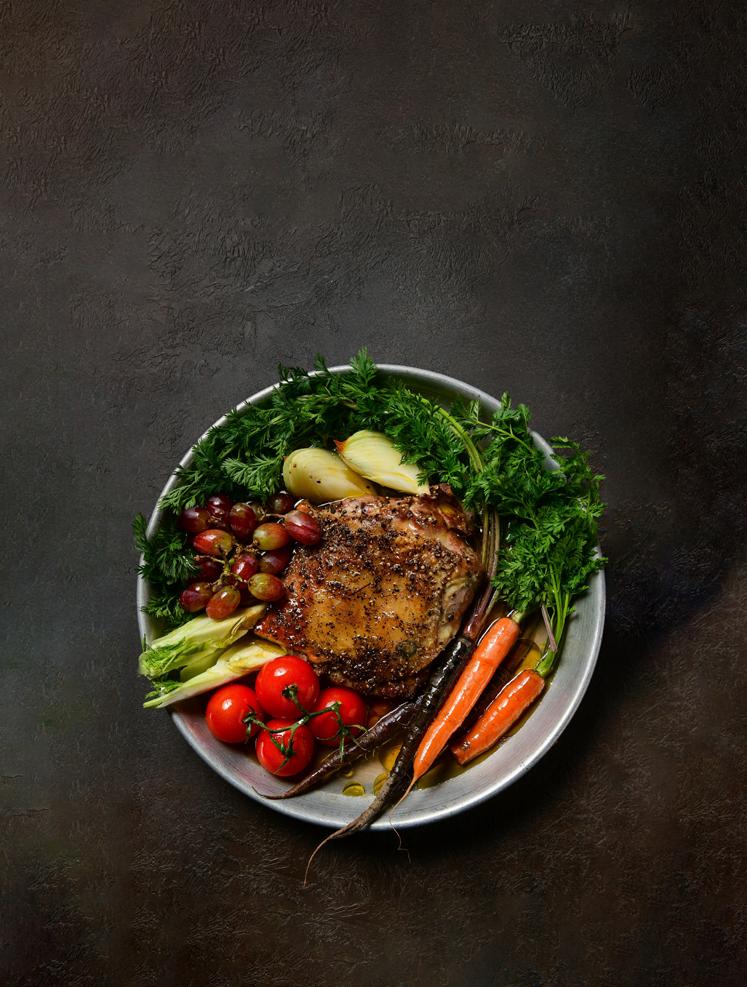
41 New Israeli food by Chef Eyal Shani 161 W 72nd St, New York, NY @ northmiznon | www.NorthMiznon.com ADVERTISEMENT
FACE THE MUSIC
ISRAELI VOICES: THE NEXT WAVE
In every issue of TAMUZ, we bring you the hottest singers and performers in Israel. For the first in a series about the future of Israeli music, we went looking for the most promising rising stars and we found some female voices that, soon enough, will be filling concert halls. We sat down with two of them to ask about their inspiration and goals.
Who is your inspiration? In music, in life.
As someone who grew up in the ’90s in front of MTV and VH1, my influences came mainly from the soul and hip-hop worlds of that time. Those who really touched me on a deep artistic level were Nina Simone, Erykah Badu, Bob Marley, and Betty Davis (the singer— former wife of Miles Davis) in the texture, the messages, and the depth of the healing that they brought into my life as a listener and a creator.
Tzlil Danin
PHOTO: YARDEN ROKACH
Tzlil Danin is an Israeli singer-songwriter, composer, songwriter and music producer, who was born in Yokneam Illit. While still in high school, she founded the rock band The Backyard, with which she performed at The Barbie, one of Israel's leading rock clubs. Tzlil managed the artists' community Jaffa Creative and her debut album, Angry and Hungry, came out in 2021 to rave reviews.
When I started my career I was singing in English because that’s all I heard and the dream has always been for an internationalMiddle Eastern career. In my mid-20s I went back to Hebrew after I took part in the last album of Metropolin (an Israeli band) and my influences in Hebrew were actually more rooted in Shoshana Demari, Esther Ofarim, and of course, Ofra Haza. They all inspire me to bring the Hebrew language to the international arena. I’ve been working on that for years in hope of cracking the right dose of Hebrew that will break through the walls of the world again.

42
Where do you see yourself in 10 years? Other goals? (Acting? Producing?)

In 10 years I see myself living in the apartment of my dreams in Israel (with a big garden) and a family. I hope to be working between Israel and the rest of the world in the international musical arena. Also, as a creator and producer of international content, I hope to export both my personal story and other content that will bring healing and new joy to TV, movies, and whatever else the universe will surprise me with. I am ready to receive it with love and curiosity.
 Watch Tzlil in a live performance
Watch Tzlil in a live performance
43
Sima Nun
Sima Nun is an Israeli creator, musician, singer, and rapper! A powerful performer who consumes the stage, speaks her mind without censorship, and presents kicking and cheeky hip-hop that manages to touch and move, she has managed to create her own genre. With the release of the successful debut album Talk already, which includes collaborations with the most interesting names in the Israeli hip-hop scene—Shekel, Yishai Suisa, Uri Shohat, Michael Suisa, and Ravid Plotnik—Sima performed on stages throughout Israel, from energetic appearances at The Barbie Club to the In-DNegev Festival. These days, Sima is working

on her next, highly anticipated album and continuing an intense tour schedule. Who is your inspiration? In music, in life. My main inspiration in life are my parents. In terms of music, It's basically punk rock bands I used to listen to growing up, like the Ramones, Descendents, Dag Nasty, The Muffs, Rosalia, Nathy Peluso. Also, and always, Erykah Badu and Rihanna.
Where do you see yourself in 10 years? Other goals? (Acting? Producing?)
Wow, I don't know, but hopefully with a kid and a partner and shows all around the world and a house next to a river or a beach and I wanna have time to relax, as well. High hopes.
Later on, I want to write a movie or a TV show and act in it, and also direct music videos and grow vegetables in my garden. That’s it for now.
PHOTO: PASHA MATZ
44 FACE THE MUSIC


 Watch Sima's latest video
Watch Sima's latest video
45
TAL OHANA
Tal Ohana was elected mayor of Yeruham in 2018, the first woman to serve in this position in the town's history. In 2019, she won the Ben Gurion Award for Public Service and Young Leadership, and this past May, she won the national award from the Movement of Quality Government in Israel. Tal holds a master’s degree in public policy from Reichman University. She is married and has one daughter.

What is your favorite part of the day?
To hold up my daughter when she wakes up from her good night’s sleep. Her big hug, after she let her tired mom sleep tight. This hug charges me with energy for the rest of the day. During the day I have some moments when I sit with the different teams to promote, to think, to plan different activities of the Council. It gives me great pleasure when I get to meet both with the directors and the people on the ground.
If you could meet with any famous figure, living or dead, who would it be?
I think the most challenging time of my life was when our family business fell apart. The business was where I grew up, I gained all my skills there. The challenge was all ISRAELI
I would have liked to have met my greatgrandmother, Rachel z”l. She passed away just a few days before I was born. Although we never met, something within her is with me. When I was 20, I went to add her name as my middle name, and it was only then I realized that my grandmother asked my mom to give me her mom’s name but my mom didn't want to. She was a woman of kindness. She made Aliyah to Israel at a late age, 60, and she took care of her grandchildren. She was a saint.
What has been the most challenging time in your life and why?
46
INSPIRATIONAL
the uncertainty around that time, but it was heartbreaking to see my dad, who was so strong and successful until then, losing himself and his life work. It was hard.
What is one of your proudest moments?
I think that it is only in retrospect that I can look at some moments on the way that I can be proud of. Six years ago, when I was the vice mayor of Yeruham I opened a big nursery center with a school and boarding. It was very important to the city. Only recently, when I took my daughter to get a vaccine in the center, I realized how beautiful and important this center is.
I’m trying to touch people's lives, even a small touch, so every time I hear about another young person from unprivileged circumstances who found a job, I’m proud.
What is your favorite Israeli dish?
It’s hard for me to describe it as Israeli. My favorite dishes come from my mother's kitchen, which is inspired by our Moroccan roots. For eight years I went back and forth from Israel to Morocco for a Zionist project I was involved with. When I came back home, I told my mom that I had been looking for food that tastes like hers but could not find it. It shows us that Israel added some layers of flavor to the qualities of Moroccan food.
What is your favorite location within Israel and why?
My favorite place in Israel is the desert crater. I love the desert, and when I need a boost for
the heart and the spirit, something that will cleanse me, make me take a deep breath and know that everything is going to be OK, I go to the Yeruham crater. Sometimes I will go to Ramon Crater as well. Something in the desert makes my spirit go high.
Who is an inspiration for you?
Inspiration for me is people who combine spirit and action. People who have a vision but stay humble, as well. People who are connected to their roots, to the Torah. I love listening to Miriam Peretz speak about how her life journey made her become such an important person in Israel. We want to hear every word that comes out of her mouth. She has the ability to tell a story that so many people can relate to.
What advice would you give a young person who wants to change the world?
I would tell him to jump into the water. Just jump fast and start swimming. Even faster than you think you can. Rabbi Jonathan Sacks said: Connect your heart’s passion to the world’s needs. This connection is where you should be inspired to be. Keep listening to everyone. Really listening. To criticism, to the presents of faith, as I call them. Keep listening, and you will get to where you should be.
What is your biggest fear?
To wake up in the morning and live a meaningless life.
47
What challenges have you faced in your political career? What are your plans for the future?
The political challenges I faced were the moments when I had to look at a person’s personal needs that were not aligned with the public’s needs. It took me a long time, and it is still a challenge, to look at a person with compassion and love from my heart. I came to politics because I want to make a change, I want to make people live the life they deserve, have a better life, have more equality, have more social mobility, and especially live a meaningful life. As I want for myself.
My plan for the future is to go for another term as the mayor of Yeruham. And then be a person that can make a change in Israel. Either in the government or any other public way that will allow me to make a difference.

How did you effectively enforce COVID-19 restrictions in the early days of the outbreak?
From the first moment of the COVID outbreak, I realized that this is a mission I need to be in charge of, from A to Z. I also realized that this is a story of resilience, not just health. I wanted to talk to the public every day, to show them that I’m here for them, that I’m doing everything in my power to help them. I wanted to show the people that I’m thinking about all aspects of their life. Their social needs, psychological needs, and financial needs.
This allowed us to feel like one big team. And they supported me when I decided to close the synagogues early, the city itself before Passover. I realized then what it means to be a leader of people. What it means to carry every burden on myself but also hope.
I learned a lot. Both for that time and for the future of who I want to be.
48


49 SCAN & SHOP@ZABARS ZABARS.TYPEPAD.COM /ZABARS LET’S STAY IN TOUCH!EASY WAYS TO ORDER SHOP: ZABARS.COM CALL: 800.697.6301 or 212.496.1234 VISIT: 80th & Broadway CLASSIC NEW YORK CITY GIFTS ZABAR’S BABKA & RUGELACH CRATE (KOSHER) Shop Zabars.com for our complete selection of gifts, food & gourmet coffee! Use code JCCBABKA for Zabar’s Babka & Rugelach Crate only. Online Only. Cannot be applied to other products or combined with other offers. Offer expires 6/30/2022. USE CODE JCCBABKA AT ZABARS.COM NOW $84! (REG. $105) + FREE GROUND SHIPPING ADVERTISEMENT


TRAIL OF ISRAEL
A VIRTUAL WALK
Part 2 of a six-part series highlighting different paths along the Israel National Trail.
Later this year, the Center for Israel will present Trail of Israel—A Virtual Walk. The series will focus on discovering all aspects of life and communities in Israel, such as the Orthodox, the Druze, technology hubs, kibbutzim, and a view of Israelis living their everyday lives.
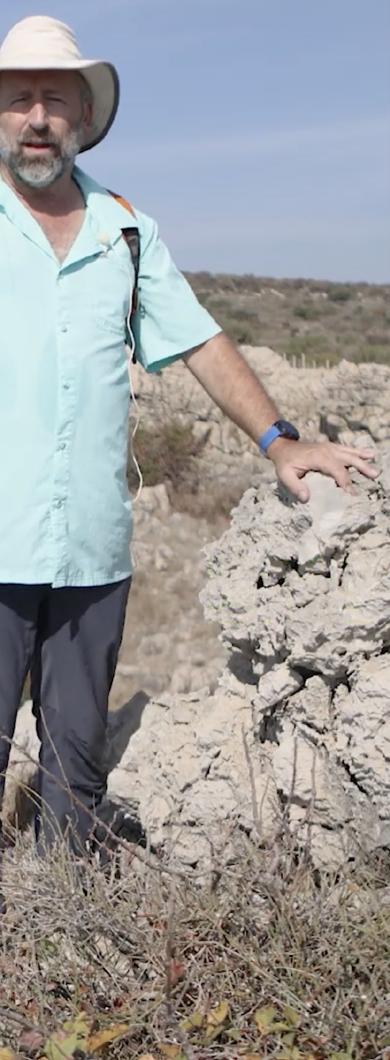
In this and subsequent issues of TAMUZ, we will share small parts of our trip along the trail. Let this be your inspiration to visit the trail, or parts of it, during your next visit to Israel.
In this clip, we visit the Sea of Galilee—the Kinneret. In keeping with our water-themed issue, the Kinneret was once the main source of water in Israel. News reports used to cover the water status of the Kinneret. Slowly the water level went down and down, until many organizations kicked in with innovations to save the water industry and restore the Kinneret to normal levels. The Kinneret's beaches and Tiberius are once again tourist hot spots.
Michael Even Esh
Tour Guide
Videographer Maor Kinsbursky
Editor
Yaniv Mizrahi, Miza Films
Trail of Israel tour guide
Michael Even Esh
51
COMING UP AT THE J
ABORTION LAW IN ISRAEL: WHAT CAN A POST-ROE AMERICA LEARN?
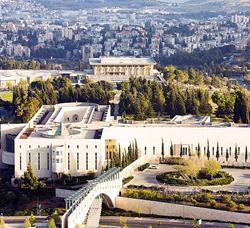
Oct 19 | Virtual
As Jews in America, struggling with the post-Roe reality of our society, what can we learn from the Jewish state about abortion? What can we learn from Israel's abortion laws to better understand our unique blend of Jewish and democratic values? Hear from experts in the field to delve into the Jewish law framework for approaching the issue of abortion, the legal parameters and history surrounding abortion, and what is being done on the ground to provide support to the people who need it.
Noon–1 pm, Pay what you wish Click here to register
TOM GOLD DANCE COMPANY
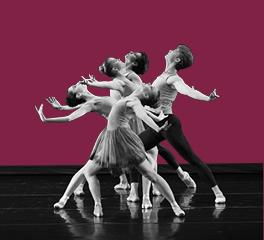
Oct 26 | In Person
Tom Gold Dance will present the first complete, in-person performance of Portraits, and the world premiere of a new work, both created by company founder and director Tom Gold. Set to chamber music by Czech composer Bohuslav Martinu, Portraits was inspired by The Morgan Library & Museum’s 2020 retrospective, David Hockney: Drawing from Life. The new work will draw on themes and elements from the concurrent exhibition, BLESS, on view in The Laurie M. Tisch Gallery in the JCC lobby.
7:30 pm, $20 Click here to purchase tickets
52
DORIT-RABINYAN
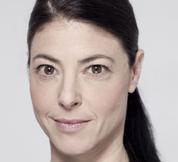
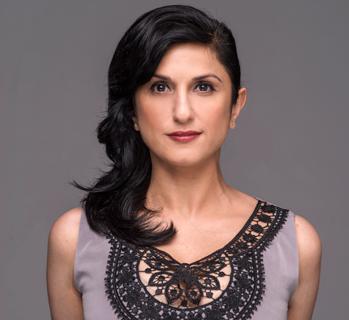
Nov 1 | In Person
Dorit Rabinyan is the bestselling author of the acclaimed Persian Brides and Strand of a Thousand Pearls. She is the recipient of the Itzhak Vinner Prize, the Prime Minister’s Prize, The ACUM award and the Jewish Quarterly Wingate Award. All the Rivers was named as a book of the year by Ha’aretz and awarded the prestigious Bernstein Prize.
In 2016, after 15 years of silence, Rabinyan published All the Rivers (also known as Borderlife), which became the center of a political scandal in Israel.
7–8:30 pm, $15
Click here to purchase tickets
FIFTH TIME'S THE CHARM? ISRAELI ELECTIONS
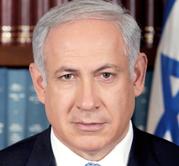
OCT 27 | In Person
As the fifth round of elections in four years approaches on November 1, hear what top experts expect to see in the next Israeli Knesset. Will Bibi take back the Prime Ministership? Will the government be ruled by the right, or will we see another unity government?
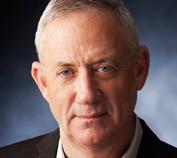
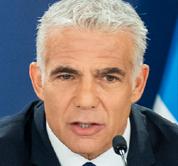
7 pm, Pay what you wish
Click here to register
53
BLESS EXHIBIT
Through Dec 31 | In Person
BLESS is a collection of graphic works by designers and artists from The Shenkar Research Center for Israeli Design, part of the Shenkar Academy, based in Ramat Gan, Israel, in collaboration with 3X3 Active Gallery. The research center, founded in 2006, maintains the most extensive digital collection in Israel of graphics and design by local artists who worked between 1850 and 2022. Bless is part inspiration, part callto-action, emphatically reminding us that kindness, inclusion, peace, and unity are not simply aspirations but daily practices and individual actions. The Laurie M. Tisch Gallery, JCC Lobby, Free
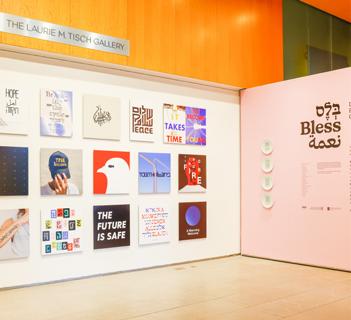
Rabbi Joanna Samuels
Chief Executive Officer
Megan Whitman
Chief Program Officer
Udi Urman Director
The David H. Sonabend Center for Israel
Rebecca Grossman Program Director
The David H. Sonabend Center for Israel Bari Lovi Director
Leadership Giving
Rebecca Winzenried
Editorial Director
Amanda Schechter Director Program Marketing
Peter Hines Senior Director Creative Services
Lawrence Quigley Senior Web Manager
PHOTO: ROSHNI KHATRI
54 CREDITS
COMING UP AT THE J
